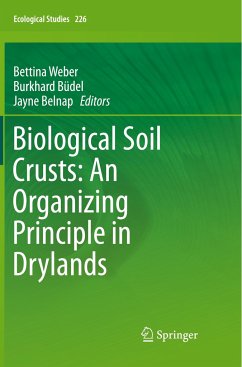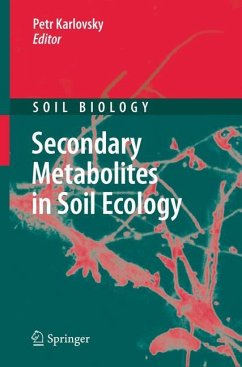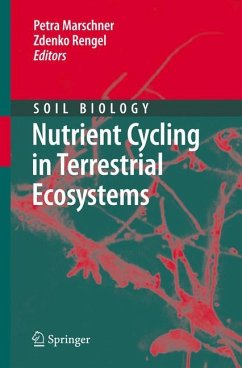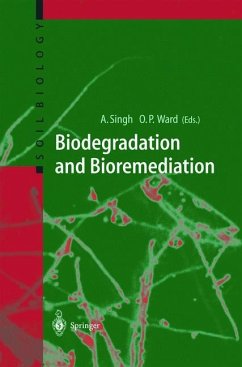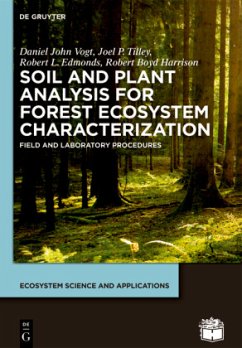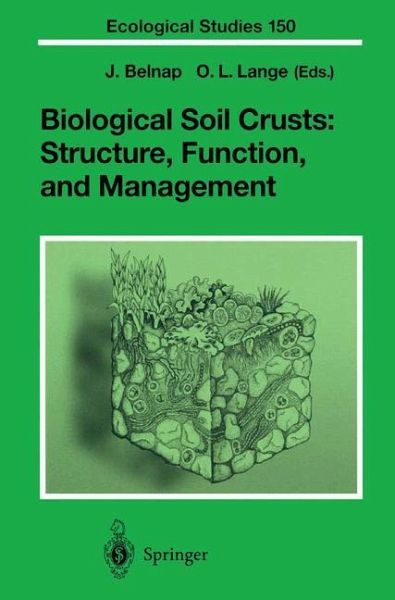
Biological Soil Crusts: Structure, Function, and Management
Versandkostenfrei!
Versandfertig in 1-2 Wochen
107,99 €
inkl. MwSt.

PAYBACK Punkte
54 °P sammeln!
In arid lands, where vegetation is sparse or absent, the open ground is not bare but generally covered by a community of small, highly specialized organisms. Cyanobacteria, algae, microfungi, lichens, and bryophytes aggregate soil particles to form a coherent skin - the biological soil crust. It stabilizes and protects the soil surface from erosion by wind and water, influences water runoff and infiltration, and contributes nitrogen and carbon to desert soils. Soil surface disturbance, such as heavy livestock grazing, human trampling or off-road vehicles, breaks up the fragile soil crust, thus compromising its stability, structure, and productivity. This book is the first synthesis of the biology of soil crusts and their importance as an ecosystem component. Composition and functioning of different soil-crust types are discussed, and case studies are used to show the impact of crusts on landscape hydrology, soil stability, nutrient cycles, and land management.
In arid and semiarid lands throughout the world, where the cover of vegetation is sparse or absent,the open spaces between the higher plants are generally not bare of autotrophic life,but covered by a community of highly specialized organisms. This soil-surface community consists of cyanob- teria, algae, lichens, mosses, microfungi, and other bacteria in differing proportions. Cyanobacterial and microfungal filaments, rhizinae and rhi- morphs of lichens, and the rhizinae and protonemata of bryophytes weave throughout the top few millimeters of soil,gluing loose soil particles together. This forms a crust up to a few centimeters thick that stabilizes and protects soil surfaces from erosive forces (Cameron and Blank 1966; Friedmann and Galun 1974; Belnap and Gardner 1993).These crusts occur in all hot,cool,and cold-arid and semiarid regions of the world,and may constitute up to or more than 70% of the living cover. Biological soil crusts have only recently been recognized as havinga major influence on terrestrial ecosystems.





